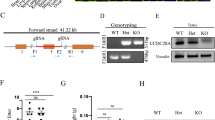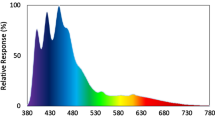Abstract
In the corals Acropora spp., eggs secrete substances that induce sperm motility regulation. An elevation of intracellular pH ([pH]i) and a regulation of intracellular Ca2+ concentration ([Ca2+]) are involved in the sperm motility regulation cascade. However, the detailed molecular aspects of flagellar motility regulation have not been fully demonstrated in Acropora. In this study, we determined the presence and roles of both calmodulin (CaM) and calcium/calmodulin dependent-protein kinase (CaMK) in the sperm flagellar motility regulation of Acropora. A 45Ca2+-overlay assay and an immunoblot analysis showed that sperm contain an acidic 16-kDa protein that was CaM, and an immunoblot analysis revealed the presence of CaMK in coral sperm. In addition, a specific inhibitor of CaMK, KN-93, and a CaM antagonist, W-7, inhibited sperm motility activation induced by NH4Cl treatment. NH4Cl treatment causes an increase in intracellular [pH]i of sperm, suggesting that CaM and CaMK are involved in sperm motility initiation caused by an increase in [pH]i. The involvement of CaM and CaMK in motility regulation in coral highlights the importance of these molecules throughout the animal kingdom.




Similar content being viewed by others
References
Babcock RC, Bull GD, Harrison PL, Heywar AJ, Oliver CC, Wallace CC, Willis BL (1986) Synchronous spawning of 105 scleractinian coral species on the Great Barrier Reef. Mar Biol 90:379–394
Ball EE, Hayward DC, Saint R, Miller DJ (2004) A simple plan-Cnidarians and the origins of developmental mechanisms. Nature Rev Genet 5:567–577
Bookbinder H, Moy GW, Vacquier VD (1990) Identification of sea urchin sperm adenylate cyclase. J Cell Biol 111:1859–1866
Brokaw CJ, Nagayama SM (1985) Modulation of the asymmetry of sea urchin sperm flagellar bending by calmodulin. J Cell Biol 100:1875–1883
Cook SP, Babcock DF (1993) Activation of Ca2+ permeability by cAMP is coordinated through the pHi increase induced by speract. J Biol Chem 268:22408–22413
Cook SP, Brokaw CJ, Muller CH, Babcock DF (1994) Sperm chemotaxis: egg peptides control cytosolic calcium to regulate flagellar responses. Dev Biol 165:10–19
Darszon A, Labarca P, Nishigaki T, Espinosa F (1999) Ion channels in sperm physiology. Physiol Rev 79:481–510
Darszon A, Beltrán C, Felix R, Nishigaki T, Treviño CL (2001) Ion transport in sperm signaling. Dev Biol 240:1–14
Harrison PL, Babcock RC, Bull GD, Oliver JK, Wallace CC, Willis BL (1984) Mass spawning in tropical reef corals. Science 223:1186–1189
Harrison PL, Wallace CC (1990) Reproduction, dispersal and recruitment of scleractinian corals. In: Dubinsky Z (ed) Ecosystem of the world: coral reefs. Elsevier Science, Amsterdam, pp 133–207
Hayashiba T, Shimoike K, Kimura T, Hosoya S, Heyward A, Harrison P, Kudo K, Omori M (1993) Patterns of coral spawning at Akajima Island, Okinawa, Japan. Mar Ecol Prog Ser 101:253–262
Heyward AJ, Babcock RC (1986) Self- and cross-fertilization in scleractinian corals. Mar Biol 90:191–195
Hirabayashi T (1981) Two-dimensional gel electrophoresis of chicken skeletal muscle proteins with agarose gels in first dimension. Anal Biochem 117:443–451
Hulen D, Baron A, Salisbury A, Clarke M (1991) Production and specificity of monoclonal antibodies against calmodulin from dictyostelium discoideum. Cell Motil Cytoskel 18:113–122
James P, Vorherr T, Carafoli E (1995) Calmodulin-binding domains: just two faced or multi-faceted. Trend Biochem Sci 20:38–42
Kirichok Y, Navarro B, Clapham DE (2006) Whole-cell patch-clamp measurements of spermatozoa reveal an alkaline-activated Ca2+ channel. Nature 439:7373–740
Laemmli UK (1970) Cleavage of structural proteins during the assembly of the head of bacteriophage T4. Nature 227:680–685
Marín-Briggiler CI, Jha KN, Chertihin O, Buffone MG, Herr JC, Vazquez-Levin MH, Visconti PE (2005) Evidence of the presence of calcium/calmodulin-dependent protein kinase IV in human sperm and its involvement in motility regulation. J Cell Sci 118:2013–2022
Maruyama K, Miyakawa T, Ebashi S (1984) Detection of calcium binding proteins by 45Ca autoradiography on nitrocellulose membrane after sodium dodecyl sulfate gel electrophoresis. J Biochem 95:511–519
Miller RL (1979a) Sperm chemotaxis in the hydromedusae. I. Species-specificity and sperm behavior. Mar Biol 53:99–114
Miller RL (1979b) Sperm chemotaxis in the hydromedusae. II. Some chemical properties of the sperm attractants. Mar Biol 53:114–124
Miller RL (1985) Demonstration of sperm chemotaxis in echinodermata: Asteroidea, Holothuroidea, Ophiurodea. J Exp Zool 234:383–414
Morita M, Nishikawa A, Nakajima A, Iguchi A, Sakai K, Takemura A, Okuno M (2006a) Sperm flagellar motility initiation, chemotaxis, and inhibition by eggs in the coral, Acropora digitifera, A. gemmifera, and A. tenuis. J Exp Biol 209:4574–4579
Morita M, Takemura A, Nakajima A, Okuno M (2006b) Microtubule sliding movement in tilapia sperm flagella axoneme is regulated by Ca2+/calmodulin-dependent protein phosphorylation. Cell Motil Cytoskeleton 63:459–470
Nakajima A, Morita M, Takemura A, Kamimura S, Okuno M (2005) Increase in intracellular pH induces phosphorylation of axonemal proteins for flagellar motility activation in starfish sperm. J Exp Biol 208:4411–4418
Nomura M, Inaba K, Morisawa M (2000) Cyclic AMP- and calmodulin-dependent phosphorylation of 21 kDa and 26 kDa proteins in axoneme is a prerequisite for SAAF-induced motile activation in ascidian spermatozoa. Dev Growth Diff 42:129–138
Nomura M, Inaba K, Morisawa M (2004) Calmodulin/calmodulin-dependent protein kinase II mediates SAAF-induced motility activation of ascidian sperm. Cell Motil Cytoskeleton 59:28–37
Riffell JA, Krug PJ, Zimmer RK (2002) Fertilization in the sea: the chemical identity of an abalone sperm attractant. J Exp Biol 205:1439–1450
Smith EF (2002) Regulation of flagellar dynein by calcium and a role for an axonemal calmodulin and calmodulin-dependent kinase. Mol Biol Cell 13:3303–3313
Spehr M, Gisselmann G, Poplawski A, Riffell JA, Wetzel CH, Zimmer RK, Hatt H (2003) Identification of a testicular odorant receptor mediating human sperm chemotaxis. Science 301:2054–2058
Towbin H, Staehelin T, Gordon J (1979) Electrophoretic transfer of proteins from polyacrylamide gels to nitrocellulose sheets: procedure and some applications. Proc Natl Acad Sci U S A 76:4350–4354
White D, Lamirande E, Gagnon C (2007) Protein kinase C is an important signaling mediator associated with motility of intact sea urchin spermatozoa. J Exp Biol 210:4053–4064
Wargo MJ, Dymek EE, Smith EF (2005) Calmodulin and PF6 are components of a complex that localizes to the C1 microtubule of the flagellar central apparatus. J Cell Sci 118:4655–4665
Wood CD, Darszon A, Whitaker M (2003) Speract induces calcium oscillations in the sperm tail. J Cell Biol 161:89–101
Yanagimachi R (1957) Some properties of the sperm-activating factor in the micropyle area of the herring egg. Annot Zool Jpn 41:114–119
Yoshida M, Inaba K, Morisawa M (1993) Sperm chemotaxis during the process of fertilization in the Ascidians Ciona Savignyi and Ciona intestinals. Dev Biol 157:497–506
Yoshida M, Inaba K, Ishida K, Morisawa M (1994) Calcium and cyclic AMP mediate sperm activation, but Ca2+ alone contributes sperm chemotaxis in the ascidian, Ciona savignyi. Dev Growth Differ 36:589–595
Ackowledgment
The authors want to express gratitude to Ms. M Nakamura (University of the Ryukyus) for helpful advice on the manuscript. This study was partially supported by a grant for the 21st Century COE program “The Comprehensive Analyses on Biodiversity in Coral Reef and Island Ecosystems in Asian and Pacific Regions” from the Ministry of Education, Culture, Sports, Science and Technology, Japan (Monbukagakusho) to MM.
Author information
Authors and Affiliations
Corresponding author
Rights and permissions
About this article
Cite this article
Morita, M., Iguchi, A. & Takemura, A. Roles of Calmodulin and Calcium/Calmodulin-Dependent Protein Kinase in Flagellar Motility Regulation in the Coral Acropora Digitifera . Mar Biotechnol 11, 118–123 (2009). https://doi.org/10.1007/s10126-008-9127-4
Received:
Accepted:
Published:
Issue Date:
DOI: https://doi.org/10.1007/s10126-008-9127-4




